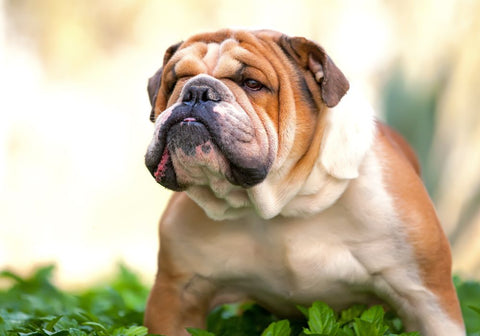A typical Bulldog is easily recognizable. Also called the English Bulldog or British Bulldog, the distinct ‘sour mug’ face coupled with a sweet and friendly personality has made this breed stand out from the pack and cemented them as one of America’s favorite breeds for years.
Categorized as a non-sporting breed, the Bulldog is a companionable dog. The pup is universally recognized as a representative of toughness and tenacity. Ironically, the relatively peaceful, family-oriented canine would rather lounge on their bed and watch the world go by.
You are watching: Meet the Breeds: The Bulldog
Key Traits of a Bulldog
The American Kennel Club (AKC) identifies the “perfect” Bulldog as a medium-sized breed with a heavy, thick-set, and low-slung body. The head is massive with a short face. The Bulldog’s general appearance should suggest stability, vigor, and strength. A Bulldog’s disposition should never be aggressive but rather pacific and dignified.
- Height – An adult Bulldog stands 15″-19″.
- Weight – A mature Bulldog weighs around 40-55 pounds, with the males slightly heavier than females.
- Lifespan – The life expectancy of a Bulldog is 8 to 10 years.
- Appearance – Bulldogs have massive heads, broad shoulders, and sturdy limbs. The ears are set high in the head, wide apart, and far from the eyes. They have well-rounded cheeks that protrude sideways and outward. The face is extremely short with a similarly short muzzle. Bulldogs typically have short tails that are either straight or screwed.
- Temperament – Bulldogs have a calm and dignified nature.
Where Did the Bulldog Originate?

The Bulldog breed originated from the British Isles. Specially-bred Bulldogs were used in the sports of bull-baiting. Because the dog is fighting a tethered bull, they need tremendous jaw power to be able to grab the bigger animal by the nose and pin it to the ground. Over time, the wide and strong muzzle became the breed’s distinguishing trait.
When bull-baiting was outlawed, dog lovers decided to preserve the breed, and they slowly evolved into the domesticated, beloved breed we know today.
Physical Traits of a Bulldog Breed
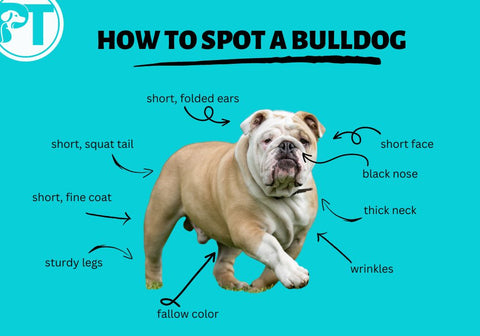
The Bulldog is distinguishable by its thick neck, short face, and heavy wrinkles. Along with these traits, this brachycephalic breed has the following physical characteristics:
- Ears – short, slender ears with a downward fold
- Eyes– distinctive sagging facial skin that makes their wide-set eyes appear sad and soulful and vary in color from dark to darker
- Nose– large, flat, almost invariably black
- Coat Length– never feathery, fringey, or curly. Instead, the hair is straight, short, flat, close, and of fine texture. The skin is soft and loose. The face is covered with heavy wrinkles, and a dewlap is found at the throat.
- Coat Color – Red, white, fawn (yellowish tan), fallow (light brown), brindle (mild tiger stripe), piebald (uneven patches of color), tri-color, lilac (rare)
- Tail– typically short and squat. Some bulldogs have tails that are “screwed,” meaning they curl in on themselves to make a tidy little bun.
Behavior and Training Tips for Bulldog Breeds
Temperament
The Bulldog is typically a calm dog that is entertaining to be around. Although this dog is trainable, it may require patience because of their reputation for being difficult. For your pet’s safety and your sanity, obedience training is advised.
Your Bulldog will be an excellent addition to the family. Still, they will demand attention and, along with it, constant training.
Behavior
The Bulldog is typically a calm dog that is entertaining to be around. They are:
- Sweet and gentle
- Dependable
- Predictable
- People-oriented
Bulldogs also make fine watchdogs, perhaps because of the courage bred into them from their days of bull-baiting.
This breed loves kids, but they might not have the enthusiasm children seek in a playmate. The Bulldog loves spending a lazy afternoon with his family, whom he guards fiercely.
Training
Early dog training will help your Bulldog puppy develop his brain. It will also ensure they develop good habits.
While a generally happy and relaxed breed, Bulldogs also have a reputation for being stubborn. So early training and proper communication are essential.
Early socialization is crucial to help your Bulldog get along with other dogs at the dog park or daycare, as they can be aggressive to unfamiliar animals. You can take your pet to other people’s houses or on car rides as a puppy. With every new event, person or animal met, give a treat. This will ensure that new experiences are associated with something positive.
You can also start with basic dog commands as early as eight (8) weeks. Begin with potty training and teaching them to moderate their biting. Then move on to commands like sit and stay.
Bulldogs may be known for hardheadedness, but that is usually just a result of poor communication and training. If you need an extra dog training boost, consider using an e-collar.
Exercise
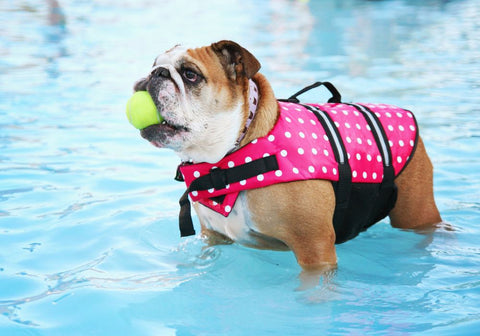
While your Bulldog may look like they’d happily lie down all day, they still need exercise. Take them for a walk for 20-40 minutes daily. If walking around the neighborhood or at the park is too dull, some of the best exercises for a Bulldog are:
- short-distance fetch
- tug of war
- adventure walks in forests
- splashing in shallow water
- obstacle course
- skateboarding
Just remember:
- Choose exercises that are easy and fun.
- Consider your Bulldog’s physical traits when choosing an exercise to do.
- Allow your dog to rest after exercising.
- Prioritize exercises that help improve stability, mobility, coordination, and strength.
Caring and Management Tips for Bulldogs
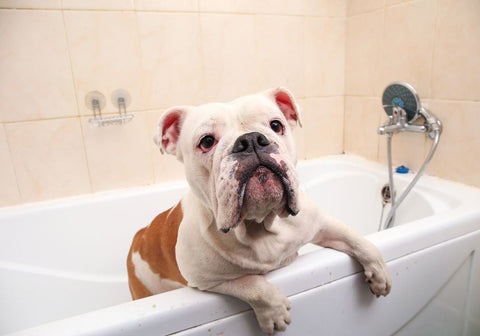
If you are a first-time English Bulldog owner or are considering adopting one, here’s what you should know about caring for a Bulldog.
Grooming
If cutting hair is not your thing, choosing a bulldog was the right decision for you. Minimal care is needed for this sleek, short-haired bundle of joy.
Ideal grooming tools to have with you are:
- Pin Brush
- Comb
- Nail Clipper
See more : Golden Retriever Temperament: What’s a Golden Retriever’s Personality Like?
Fur Brushing
Brushing is necessary to remove unwanted hair and skin cells and distribute oils uniformly throughout the coat. To keep your dog’s coat smooth and lustrous, brush it daily or at least a few times weekly.
Nail Trim
Trimming your Bulldog’s nails improves their appearance and guards against broken nails. Your Bulldog’s movement may be altered by overgrown nails, which could later result in catastrophic bone and joint injuries.
Bath
Due to their facial wrinkles, bathing a Bulldog is different from bathing any other breed. These creases on the skin’s surface might be a breeding habitat for bacteria. Spend time washing each fold of your dog’s coat when bathing them.
General Health
Eye Care
Examine your dog’s eyes every few weeks. The eyes on your Bulldog ought to be well-formed and radiant. Take your dog to the veterinarian immediately and have them checked for excessive discharge if you notice a color change. Dogs frequently experience tear stains. If your Bulldog is one of them, take them to the clinic immediately.
Oral Care
Bulldogs are susceptible to periodontal disorders, much like the majority of canines. The market is flooded with numerous varieties of dog toothbrushes. To keep your dog happy and healthy, brush their teeth daily or thrice weekly.
Diet & Nutrition
To maintain healthy skin and coat and overall health, it is essential to provide good nutrition to your dog through a well-balanced diet, vitamins, and healthy treats.
A Bulldog is simple to overfeed, but obesity might strain their joints. Therefore, don’t let them gain too much weight. Instead of leaving food out all the time, ensure your adult Bulldog gets enough nutrition by feeding them twice a day. Give them the hands-on test if you’re unclear whether they’re overweight. Spread your fingers outward and put your hands on their back with the thumbs running along the spine. Without exerting much pressure, you ought to be able to feel but not see their ribs. If you can’t, your dog should eat less and exercise more.
Note: A half to two cups of premium dog food per day, divided into two meals, is the suggested daily intake.
Common Health Problems of Bulldogs
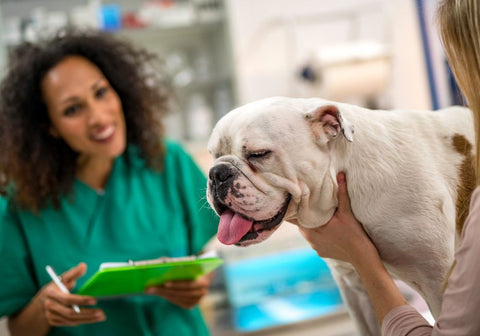
There is no denying that the Bulldog may not be the healthiest breed of canine. Bulldogs frequently experience the following health issues:
1. Breathing Problems
Due to their short muzzles and the form of their heads, almost all Bulldogs have some degree of the genetic disorder known as Brachycephalic Obstructive Airway Syndrome, meaning they have trouble breathing. Because of this, Bulldogs get exhausted with even light exercise. They can overheat in the sun even when it’s not hot outside and breathe and snore loudly. One way to make breathing easier for your pet is to maintain a healthy weight.
Surgery can be beneficial if their breathing issues are more severe. The breathing pathways are opened through soft-palate surgery, facilitating easier breathing for your dog.
2. Skin Infections
A Bulldog’s wrinkled skin is susceptible to skin diseases. You must dry and clean their folds daily. Increased scratching or itching, an unpleasant odor, or a greasy or extremely dry coat can all indicate infection. The best treatment option is usually a topical medicinal cream, which your veterinarian can decide on.
3. Eye Disorders
Cherry eye appears as a red or pink protrusion in the inner corner of the eye. It happens as the Bulldog’s third eyelid swells and protrudes. It can also occasionally occur by inflammation or weak connective tissue.
Don’t put off visiting the clinic if your dog has cherry eyes since the longer it takes to treat it, the worse the condition can become. Entropion, a disorder in which the eyelid folds in and irritates the eye, is also a problem for Bulldogs. Left untreated, blindness could result.
4. Orthopedic Disorders
See more : Mini French Bulldogs: should you adopt one?
The leading causes of hip dysplasia in dogs are abnormal joint structure and laxity of the muscles and ligaments that usually support the hip joints. The articular surfaces of the hip and ball joint lose normal contact as the condition worsens. This separation within the joint alters the articular surfaces’ size and shape. When the socket and ball don’t fit properly, they start to rub and grind rather than move freely. Over time, this condition may cause joint degradation and eventual loss of joint functionality.
5. Ventricular Septal Defect
A hole forms in the wall dividing the lower heart chambers due to this congenital abnormality.
Vet bills can be significant throughout a Bulldog’s lifespan due to various health issues that frequently affect the breed. Consider this when getting a Bulldog for a pet.
What Type of Pet Owners Will Do Well with a Bulldog?
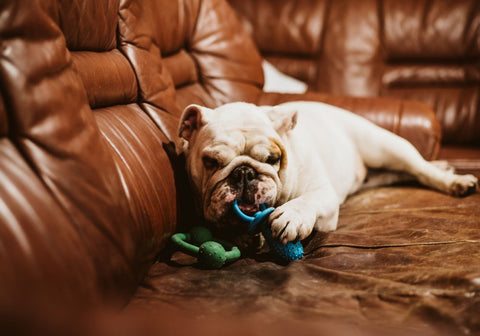
Bulldogs don’t need luxurious digs or a large yard to be comfortable. But this breed’s safest, coziest environment is still one with good air conditioning. Bulldogs have more trouble breathing, making it simpler to become overheated. Bulldogs thrive in temperate regions with moderate highs and lows.
They are social and adaptable puppies that, aside from that, would adore living in a household with lots of people to show them affection. Even aloof cats get along with them well! Bulldogs can also be content to bond with a single devoted pet parent.
Is a Bulldog a Perfect Match for you?
You might consider getting a Bulldog if you want a dog that:
- Is medium-sized
- Has a short coat that is easy to maintain
- Is Easy going and dependable
- Doesn’t exercise much
- Seldom Barks
However, if you prefer not to deal with…
- Stubbornness
- Serious Food Possessiveness
- Snorting, Snuffling, Wheezing, Grunting, and Loud Snoring
- Drooling
- Gassy Dogs
- A Long List of Health Problems
- High Vet Bills and Maintenance Costs
Then, sadly, an English Bulldog may not be suitable for you.
FAQs About the Bulldog Breed
Do Bulldogs shed or cause allergies?
- Although less frequently than other breeds, Bulldogs do shed. Different proteins in the dog’s saliva, dander, and hair can trigger allergies in people. Some breeds have lower dander production than other breeds. Bulldogs, however, are not among the types that produce less dander.
Is the Bulldog a good choice for a first-time dog owner?
- One of the best breeds for a beginner dog owner is the Bulldog. It’s a quiet, amiable dog that doesn’t need a lot of exercise and only needs the most fundamental grooming techniques. However, inexperienced dog owners should be ready for their Bulldog to likely require regular visits to the clinic to monitor their dog’s health.
Are Bulldogs dangerous?
- Bulldogs are one of the friendliest, easiest-going breeds, although they used to battle enormous bulls. Everyone in your life—from your young niece to your elderly uncle and everyone in between—will probably get along well with a bulldog.
Is there a dog smell coming from Bulldogs?
- Yes. However, it is not a product of the skin or coat. Bulldogs are compelled to swallow air when they eat and drink because of the abnormalities of their head and digestive system. Moreover, air that is swallowed must eventually escape. Therefore, the breed can be odorous.
Are Bulldogs easy to train?
- Bulldog pups and adolescents are constantly ready to “challenge” your rules. Therefore, a potential Bulldog owner must be confident and able to build a solid leader-follower bond with a breed with a lot of independence.
When kids try to “charm” you with humorous acts, you need to be constant, persistent, encouraging, and rewarding instead of giving in. Follow the guidelines you’ve created. In that case, your Bulldog’s behavior ought to be okay.
The good news is that an e-collar is there to help you train your stubborn Bulldog! Here are PetsTEK’s Picks for the best shock collars for Bulldogs.
1. Mini Educator ET-300 Remote Training Collar by E-Collar Technologies
Don’t be deceived by the name. The Mini Educator e-collar has a solid selection of indoor and outdoor dog training functions. The remote is simple to use and even simpler to grip. It offers a wide range of shock settings and guarantees a “blunter” shock, which may be preferable for stubborn dogs like the Bulldog who need firmer discipline. Can’t seem to locate your dog? The ET-300 includes a bright LED, and you can make the remote beep. The battery life lasts 60 to 80 hours, depending on usage. Comes in three color variants – yellow, black, and Zen. This Educator dog shock collar also has a vibration-only variant – the PG-300.
2. SportDOG SD-425X FieldTrainer Remote Training Collar
The SportDog FieldTrainer 425X is a mid-range e-collar with a 500-yard range ideal for most yards, even big ones. Whether rain or a shallow pond, the waterproof DRYTEK technology guarantees your dog’s protection. This beginner’s dog training collar offers your dog a range of correction alternatives while being simple for you to use. Comes in a 425XS variant for more stubborn pets.
3. Boss Educator ET-800 Remote Training Collar by E-Collar Technologies
The Boss Educator ET-800 remote training e collar is one of the best Educator collars for medium to big dogs. It has a one-mile range and 100 levels of static stimulation. There are 60 levels of an extra boost, three stimulation modes (momentary, continuous, and combination mode), Pavlovian tone, and lock and set technology. It is also entirely waterproof and can be expanded to a two-dog system. In other words, it’s everything you could ask for in an e-collar.
4. Dogtra 1900S Remote Training Collar
Dogtra shock collars are fantastic. This e-collar is no exception. The 1900S is perfect for you if you’re looking for a highly effective collar that doesn’t sacrifice quality. The ergonomic design makes it easy to fit comfortably around your dog’s neck. Due to its incredible durability, you may use it for indoor and outdoor activities. With a ¾-mile range, the Dogtra 1900S is an excellent option for whatever training program you choose for your dog, no matter how easy or complex. Also comes in an all-black variant – the Dogtra 1900S Black Edition.
Source: https://arcy.info
Category: Dog Breeds
